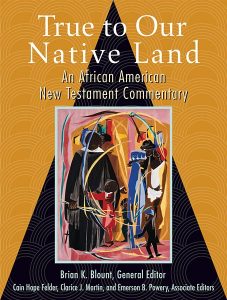by Jeff Wright, Conference Leadership Minister
 A confession is in order at the beginning of this article. I am irredeemably old school. While I own e-readers (“Love and Saint Augustine”, by Hannah Arendt is on my Kindle app right now) and listen to podcasts (I’m working through the final season of West Wing Weekly) and music (try the Hillbilly Thomists on Spotify), I’m still old school. There is something good about holding print, paper, and binding in your hands and engaging in the physical art of reading.
A confession is in order at the beginning of this article. I am irredeemably old school. While I own e-readers (“Love and Saint Augustine”, by Hannah Arendt is on my Kindle app right now) and listen to podcasts (I’m working through the final season of West Wing Weekly) and music (try the Hillbilly Thomists on Spotify), I’m still old school. There is something good about holding print, paper, and binding in your hands and engaging in the physical art of reading.
In the midst of multiple crises, there does not always seem time enough to read. I sometimes find my glasses still on, and a book cradled to my chest when I am awakened at 3:00 am. Books are a sign of joy, in my humble opinion. Even books with hard messages can offer hope when the print, paper, and binding are a physical reminder of the power of the word.
In the past few months, some of the books that have been challenging me are books with the word “color” in the title.
 The first of these, “The Color of Compromise,” by Jemar Tisby (2019, Zondervan Reflective), is a steely-eyed critique of the white church in America. The complicity of how the white church in America is fostering and giving life to systemic racism is explained.
The first of these, “The Color of Compromise,” by Jemar Tisby (2019, Zondervan Reflective), is a steely-eyed critique of the white church in America. The complicity of how the white church in America is fostering and giving life to systemic racism is explained.
A second book of color, “The Color of Money: Black Banks and the Racial Wealth Gap,” by Mehrsa Baradaran (2017, Belknap Press), is a detailed examination into the ways in which credit, the lubrication of capitalism, has been denied to African Americans as a matter of repeated public policy choices at the federal level from the emancipation of slaves until today.
A third book, “The Color of Law,” by Richard Rothstein (2017, Liveright), examines the ways zoning laws were created to form segregated, gerrymandered communities. My colleagues on the City of Riverside (CA) Human Relations Commission (on which I serve as a commissioner) are reading this book together to assess how our own twenty-seven local neighborhoods are victims of such segregationist policies.
It would be (and has been) easy to become completely despondent after reading those books. But two additional books have given me hope.
First, “Rediscipling the White Church: From Cheap Diversity to True Solidarity,” by David W. Swanson (2020, InterVarsity Press), offers the fruits borne of years laboring to truly be a leader of an authentically multicultural church.
 A second book is “True to Our Native Land: An African American New Testament Commentary.” Published by Fortress Press in 2007, Brian K Blount is the General Editor of this good-sized desk volume. I’m not generally a fan of one-volume New Testament commentaries. I think too much gets cut out to make it useful. But I make an exception with this book.
A second book is “True to Our Native Land: An African American New Testament Commentary.” Published by Fortress Press in 2007, Brian K Blount is the General Editor of this good-sized desk volume. I’m not generally a fan of one-volume New Testament commentaries. I think too much gets cut out to make it useful. But I make an exception with this book.
The beautifully written essays are coupled with scholarly depth. The relevant sidebars on the text’s application to the African American condition today make this a book you just have to add to your library.
One word of caution: Do not take this particular commentary to bed to read. It is big enough to hurt when you drop it on your face as you fall asleep.
The opinions expressed in articles posted on Mosaic’s website are those of the author and may not reflect the official policy of Mosaic Conference. Mosaic is a large conference, crossing ethnicities, geographies, generations, theologies, and politics. Each person can only speak for themselves; no one can represent “the conference.” May God give us the grace to hear what the Spirit is speaking to us through people with whom we disagree and the humility and courage to love one another even when those disagreements can’t be bridged.
